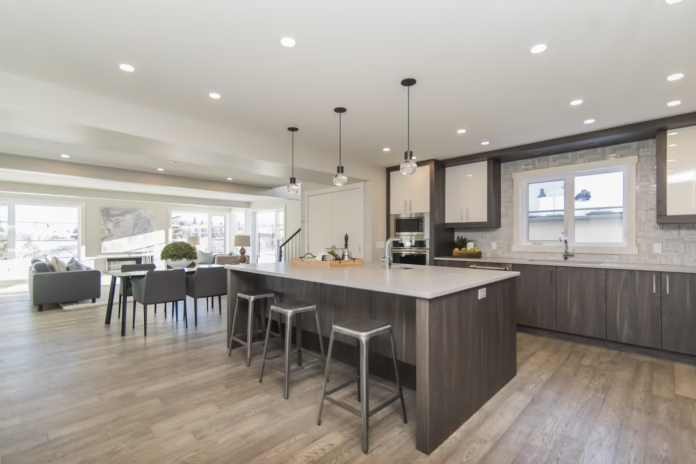The kitchen lights is the heart of the home, where meals are prepared, families gather, and memories are made. Proper lighting in the kitchen is essential not only for functionality but also for creating a warm and inviting atmosphere. Whether you’re chopping vegetables, reading a recipe, or entertaining guests, the right lighting can enhance both safety and aesthetics. From task lighting to ambient fixtures, choosing the best kitchen lights depends on layout, design preferences, and practical needs. In this article, we’ll explore different types of kitchen lighting and how to optimize them for a well-lit, stylish space.
1. Importance of Proper Kitchen Lighting
Lighting plays a crucial role in the kitchen, affecting visibility, mood, and even energy efficiency. Poor lighting can make food preparation difficult and even pose safety hazards, such as accidental cuts or burns. On the other hand, a well-lit kitchen improves functionality, making it easier to read recipes, distinguish between ingredients, and clean surfaces thoroughly. Additionally, lighting contributes to the overall ambiance—bright, cool lights can create an energetic vibe, while warm, dimmable lights offer a cozy feel for dining and socializing. Investing in the right lighting solutions ensures a balance between practicality and aesthetics, transforming your kitchen into a more enjoyable space.
2. Types of Kitchen Lighting
There are three primary types of kitchen lighting, each serving a different purpose:
A. Task Lighting
Task lighting focuses on specific work areas, such as countertops, stoves, and sinks, where precise visibility is needed. Under-cabinet LED strips, pendant lights over islands, and recessed spotlights are popular choices. These lights should be bright and glare-free to prevent eye strain while chopping, cooking, or washing dishes.
B. Ambient Lighting
Ambient lighting provides overall illumination, ensuring the entire kitchen is evenly lit. Ceiling-mounted fixtures like chandeliers, flush mounts, and track lighting are common options. This type of lighting sets the general mood and should complement the kitchen’s color scheme and decor.
C. Accent Lighting
Accent lighting adds depth and highlights design features, such as glass cabinets, artwork, or architectural details. LED tape lights inside shelves or directional spotlights can create visual interest and enhance the kitchen’s aesthetic appeal.
3. Choosing the Right Light Bulbs
Selecting the correct bulbs is just as important as choosing fixtures. The three key factors to consider are brightness (measured in lumens), color temperature (measured in Kelvins), and energy efficiency. For task lighting, opt for bright, daylight-balanced bulbs (4000K–5000K) to improve visibility. Warm white bulbs (2700K–3000K) work well for ambient lighting, creating a welcoming atmosphere. LED bulbs are the most energy-efficient, lasting longer and consuming less electricity than incandescent or halogen alternatives. Smart bulbs with dimming capabilities also offer flexibility, allowing you to adjust lighting based on different needs throughout the day.
4. Best Lighting Layouts for Different Kitchen Styles
The ideal lighting setup depends on your kitchen’s size and layout. In a galley kitchen, linear recessed lights along the ceiling and under-cabinet lighting maximize efficiency. For open-concept kitchens, a combination of pendant lights over the island, track lighting for general illumination, and subtle LED strips for accent lighting creates a balanced look. Small kitchens benefit from wall-mounted fixtures or compact flush mounts to save space while ensuring adequate brightness. Layering different types of lighting ensures functionality without compromising style.
5. Trends in Modern Kitchen Lighting
Modern kitchens are embracing innovative lighting trends, such as smart lighting systems that can be controlled via voice commands or smartphone apps. Minimalist designs, like slim LED bars and geometric pendant lights, are gaining popularity for their sleek appearance. Industrial-style fixtures with exposed bulbs and metallic finishes add a bold, contemporary touch. Additionally, energy-saving solutions, such as motion-sensor lights and solar-powered options, are becoming more common as homeowners prioritize sustainability.
Conclusion
A well-designed kitchen lighting scheme enhances both functionality and style, making cooking and socializing more enjoyable. By combining task, ambient, and accent lighting, selecting the right bulbs, and staying updated with modern trends, you can create a kitchen that is both practical and visually appealing. Whether you prefer a bright, efficient workspace or a cozy, dimly lit dining area, the right lighting choices will transform your kitchen into a well-lit haven.


